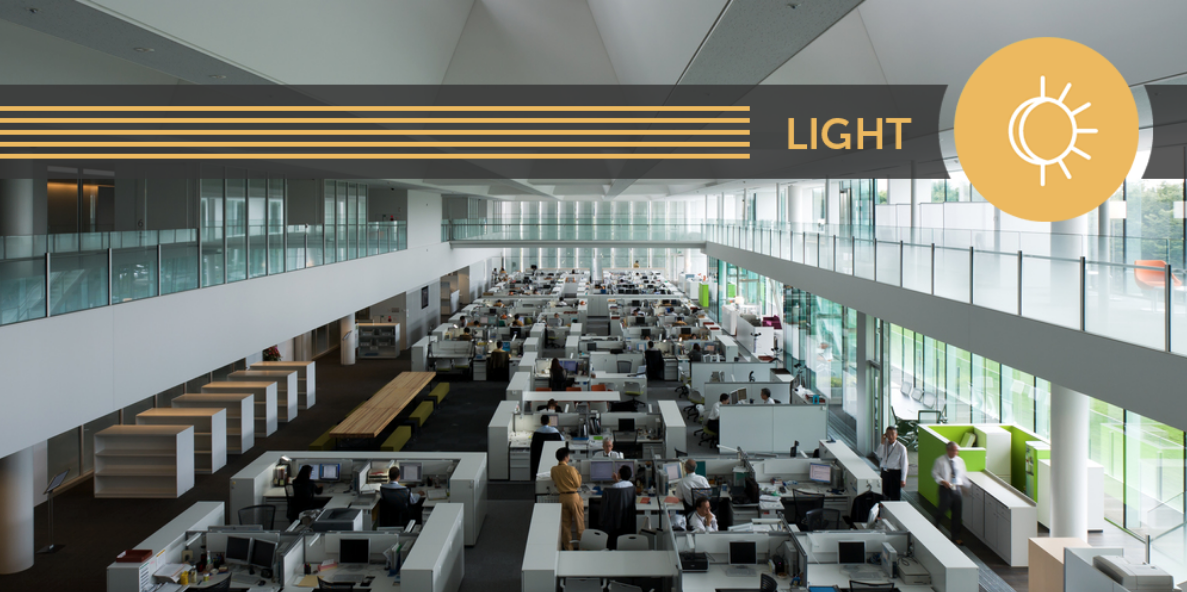IWBI WELL Tip: Navigating Preconditions for the Light Concept
by Tori Shepherd

Have you ever approached a WELL precondition and wondered where to begin? Not to fret - we’ve launched a Navigating preconditions series to help project teams get started incorporating a number of preconditions from different WELL concepts into their project’s design and policies.
What are the building blocks of the Light Concept?
Within the Light Concept, feature requirements provide illumination guidelines that aim to minimize disruption to the body’s circadian system, enhance productivity, support good sleep quality and provide appropriate visual acuity where needed. Key terms include ambient lighting, illuminance (lux), visible transmittance (VT), equivalent melanopic lux (EML), glazing, color rendering index (CRI), correlated color temperature (CCT), light reflectance values (LRV), spatial daylight autonomy (sDA) and annual sunlight exposure (aSE).
Project teams looking to refresh their knowledge of subjects referenced throughout the Light Concept can consult the Glossary for more information.
Who are the relevant stakeholders?
Depending on project scope, it may be helpful to consider engaging the following team members when implementing the light features:
- Architect
- Electrical engineer
- Interior designer
- Landlord
- Lighting consultant
- Vendor: Building controls and light fixtures
How should you approach a feature?
- Understand the feature intent and background. Here you can learn how requirements aim to address particular challenges associated with human health and well-being. If you’re interested in learning more, check out the Light WELLography on the Build WELL App.
- Read feature requirements and verification methods.
- Determine stakeholders.
- Consult the FAQs: your question may already have been answered!
- Explore equivalent standards, codes or practices that may be more applicable to your locality.
- Explore published Alternative Adherence Paths (AAPs). If all other options are exhausted, the project may develop and submit a new AAP which meets the feature intent in a method dissimilar from feature requirements.
- If pursuing another certification program, consult the BREEAM, Green Star, LEED or Living Building Challenge Crosswalks for guidance on dual certification overlaps and efficiencies, such as features that align to provide partial equivalence or full compliance.
- Seek inspiration from IWBI’s Article Library, such as WELL Story: Light at Arup.
- Consult Standard Citations for additional information. You can find these insightful resources by expanding the tab at the bottom of each feature on the Digital Standard.
- If questions remain after consulting these resources, reach out to your WELL Coaching Contact for guidance and technical support.

